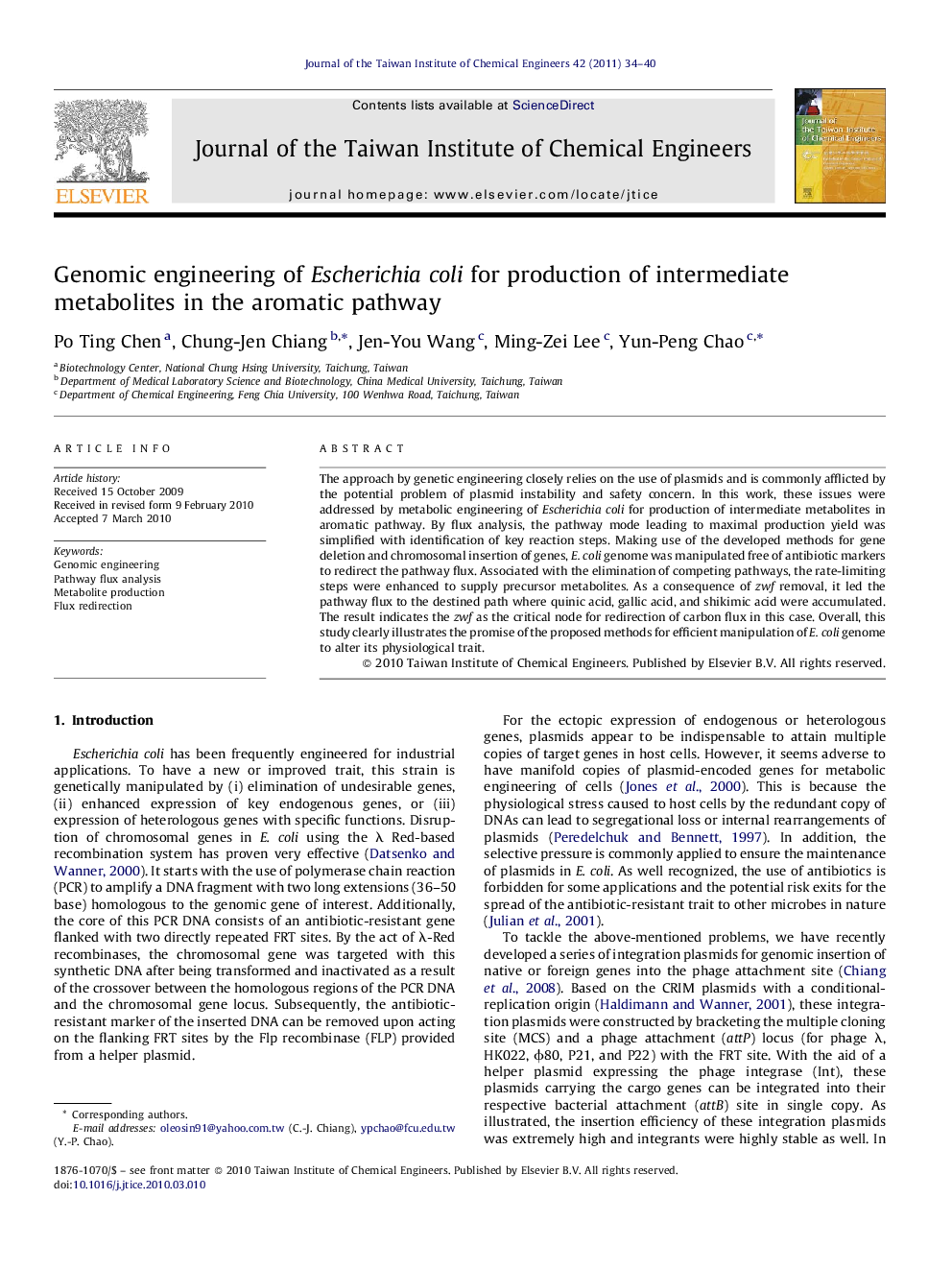| Article ID | Journal | Published Year | Pages | File Type |
|---|---|---|---|---|
| 691820 | Journal of the Taiwan Institute of Chemical Engineers | 2011 | 7 Pages |
The approach by genetic engineering closely relies on the use of plasmids and is commonly afflicted by the potential problem of plasmid instability and safety concern. In this work, these issues were addressed by metabolic engineering of Escherichia coli for production of intermediate metabolites in aromatic pathway. By flux analysis, the pathway mode leading to maximal production yield was simplified with identification of key reaction steps. Making use of the developed methods for gene deletion and chromosomal insertion of genes, E. coli genome was manipulated free of antibiotic markers to redirect the pathway flux. Associated with the elimination of competing pathways, the rate-limiting steps were enhanced to supply precursor metabolites. As a consequence of zwf removal, it led the pathway flux to the destined path where quinic acid, gallic acid, and shikimic acid were accumulated. The result indicates the zwf as the critical node for redirection of carbon flux in this case. Overall, this study clearly illustrates the promise of the proposed methods for efficient manipulation of E. coli genome to alter its physiological trait.
